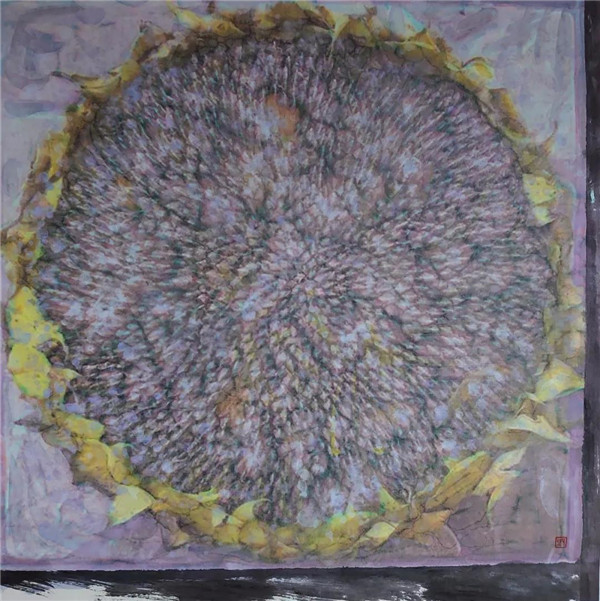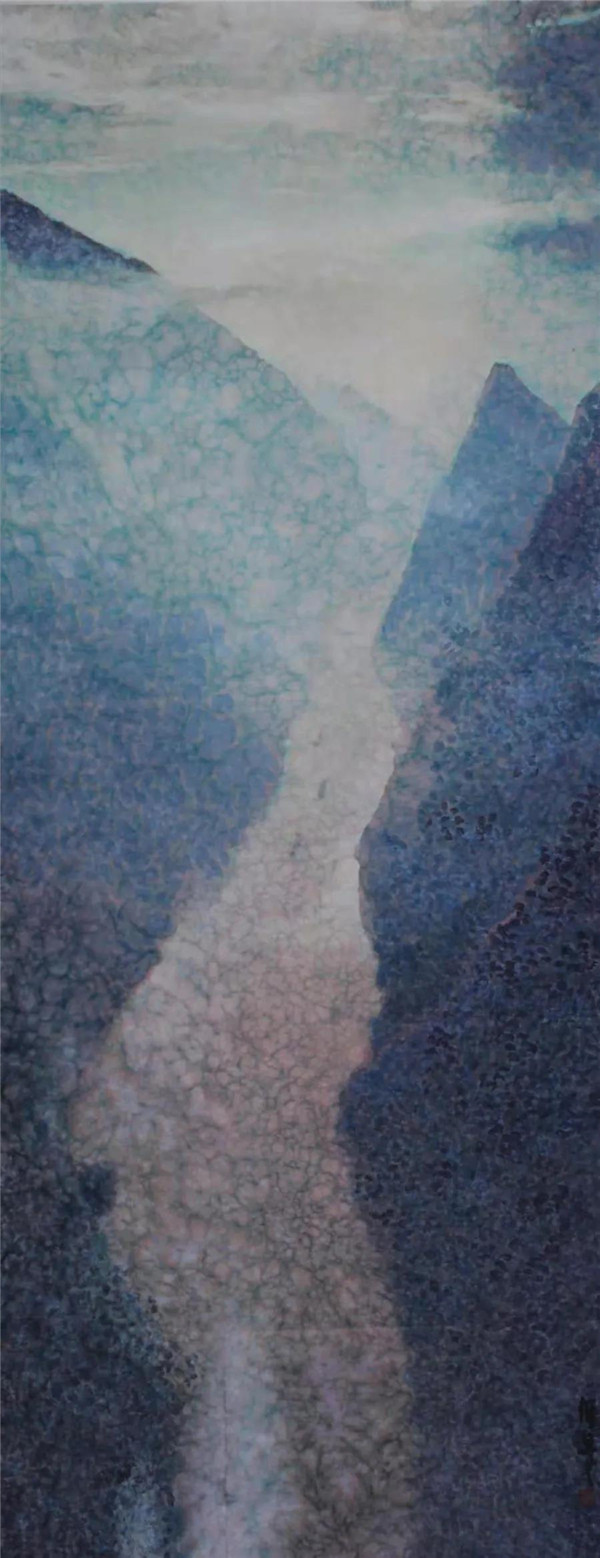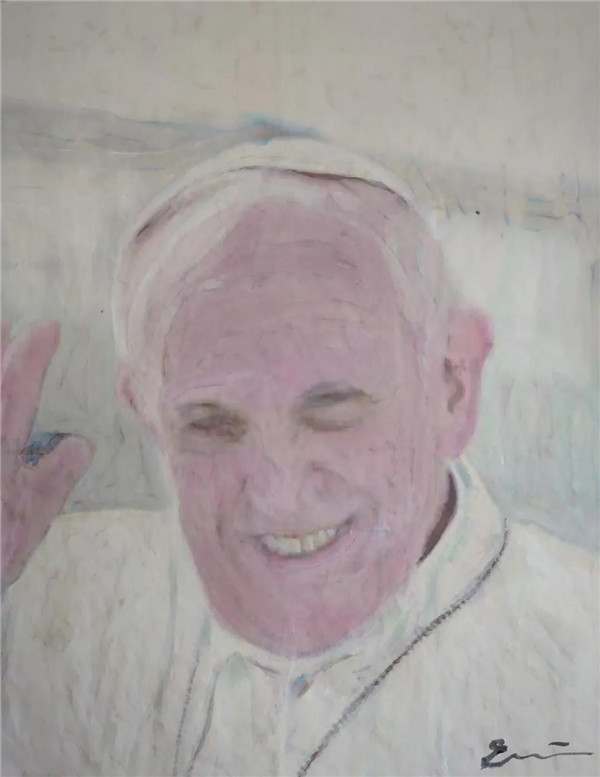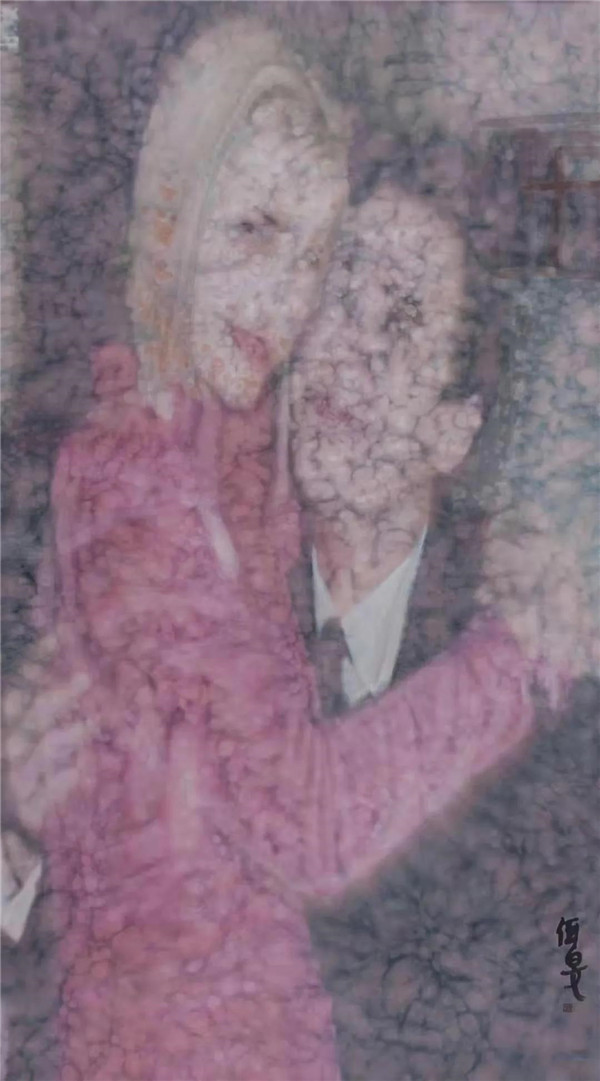

杨佴旻工作室 2020年拍摄
末日未来
文/杨佴旻
这个糟糕的冬春,改变着每一个人,地球上的一切都被改变,艺术家思想最多的已不是艺术本身。看着新闻里那些感染和死亡的人们,听着各种谣言传说,内心非常焦虑,我开始想医学,期待着灵丹妙药,我想中医到底是什么?人类初期,不分地域,人们都在用树根、草叶、树皮、野果、石块、草灰等治疗疾病。神农氏舍身尝百草,我想在世界的西方一定还有一个白皮肤、蓝眼睛的神农。那时的医学没有东西概念,传统医学是经过多少人、多少代人的实践,甚至献出生命积累的经验。小时候在西山上,我手被划破,正手足无措时,一个大孩子拿着一个蘑菇状的东西跑过来,他说这是灰疱,它能止血;他划开灰疱的顶部,里面露出深赭石色粉末,他把粉末涂到伤口上,血止住了,疼痛感也减弱了。后来,我知道那是菌类的一种,那是我第一次对医疗的记忆。那是人类最初的医疗。如果与现代医疗相比较,这是传统医学。我想一定是的,这无需考证,这是人类初期宝贵经验的一种。
回到绘画。人类最早的绘画实则文字,之所以这么说,是因为人类最早的、旧石器时代的绘画,其作用是为了记事,它们虽然刻画了物像,其目的却是最初的文字纪录。从画画记事,到文字语言的形成,中国一直沿着绘画(象形)的轨迹,而西方文字则逐步走入抽象。人类进入13世纪,随着科学技术在欧洲的兴起,绘画从涂鸦期、到追求形似,画家开始引入光影、解剖和透视学到创作之中。其代表人物有佛罗伦萨画家皮耶罗·德拉弗朗西斯科(Piero della Francesca),约1420-1492。皮耶罗在绘画之外致力于数学和几何学研究,他的画中强调数理几何的严谨与平衡。他的代表作有阿雷佐城的圣弗朗西斯科教堂壁画,其中《示巴女王礼拜神木》及《示巴女王与所罗门王会晤》最为著名。他为乌尔比诺公爵夫妇画的肖像,是文艺复兴时期的杰出作品。他晚年著有《绘画透视法》及《论五种正规体》等。中国绘画,从石器时代的岩画,顺沿着人类初期绘画的形式拓展。从涂鸦到似与不似,直到19世纪引入光影、几何学等科学因素,人类智慧经过一段漫长的离别之后再次汇和。
到此本文该结束了,我偏偏又想到了筷子。用两个小棍儿夹东西吃,我想如今的刀叉民族曾经也是,在制铁没有发明前他们还能用什么吃饭?从山洞里走出来,东方人延续使用了那两根棍儿,筷子,西洋人改用了铁器。在中国,如果没有外因,它还会沿着农耕文明的轨迹不知道走多久。好在人类走过的路都是我们的路。因为变化,而多样,所以精彩。
灾难时期,艺术家在努力呼喊,我更看重艺术对社会,对人心的抚慰,艺术唤醒世界的能力很有限,艺术抚慰世界的能力无与伦比。因此,人类创造了文学和艺术。越是灾难世界需要抚慰。
目前这样的时段,无论发生什么不愉快的事情,甚至多么悲伤,我们的内心必须保持自信,保持一种力量,使我们可以继续能够持有灵魂与感知。库
2020年最新创作

巴黎圣母院 Notre Dame de Paris 宣纸、墨、国画色 97cm×180cm 2020年

庚子春色 Spring color of gengzi 宣纸、墨、国画色 179cm×95cm 2020年

王子莲 Lotus prince 宣纸、墨、国画色 69cm×69cm 2020年

峡谷 Canyon 宣纸、墨、国画色 145cm×367cm 2020


宇宙 universe 广场雕塑 300cm×300cm 2020
近年新作

晨 morning 宣纸、墨、国画色 171.2cm×95.3cm 2019

独秀 宣纸、墨、国画色 68cm×123.5cm 2019

竞放 宣纸、墨、国画色 67cm×92cm 2019

夏 summer 宣纸、墨、国画色 68cm×80cm 2019

立春 Beginning of spring 宣纸、墨、国画色 136cm×68cm 2019

天坛 宣纸、墨、国画色 95.6cm×86.2cm 2019

我们从这里来 We're here 宣纸、墨、国画色 144.6cm×366.5cm 2019

沃尔维克城堡 宣纸、墨、国画色 122cm×244cm 2019

向日葵 宣纸、墨、国画色 145cm×367cm 2019

弗朗西斯教皇 Pope Francis 宣纸、墨、国画色 144cm×110cm 2019

祖马 Zuma 宣纸、墨、国画色 129.5cm×67.6cm 2019

昆斯 Koons 宣纸、墨、国画色 171.5cm×95.4cm 2019

银行家 banker 宣纸、墨、国画色 2019

海报 我们的星球

个展延期:原定于2020年4月26日至9月20日,在巴黎路易 圣莱克艺术与历史博物馆举行的“重返色彩——杨佴旻的风景展”延期举行。具体时间待定。EXPOSITION REPORTEE /// Yang Ermin. La réapparition de la couleur。
Doomsday future
It’s been a terrible winter-spring, that changes everyone. Everything on earth seems altered. For artists, now their primary concern is no longer, if it had been, art itself. All the numbers of infections and deaths on the news, all the rumors and hearsays… cultivate my anxiety. I began to think about the medicine, the quest for magical cure, but what is the TCM (Traditional Chinese Medicine), anyway? In the early human history, through out the continents people were using plants, roots, grass leaves, bark, wild fruits, rocks and grass ashes to treat illnesses. In Chinese mythology, it was Shen Nong who tasted hundreds of herbs in order to identify their characteristics and taught people their medical uses. I assume that somewhere in the western world there had also been a Shen Nong with blue eyes and blond hair. By then there were no concepts of East/West in medicine. The traditional medicine paved its way through practices, generation by generation, with sometimes the price of peoples’ lives, then passed on as memory or experience. When I was little, I was once playing on the west hill and cut my hand. An elder boy ran off and fetched me a mushroom, told me that it was a Grey blister (灰疱) which would stop the bleeding. He cut it open by the top, took some of the dark ochre powder from inside and then put it on the wound. The bleeding was stopped immediately and the pain eased up. Later I learned that the Grey blister was a kind of fungi. That was my first memory of medical treatment. One that keeps its earliest form. Compared to modern medical science, it is in no doubt traditional. I am sure of it, no need of historical proof, this is one of the precious primordial human experiences.
Let’s get back to painting. The earliest drawings made by human were in fact writings, which is because the earliest Paleolithic drawings were actually records of events, although they depict the form of objects, their objective was to transmit a literal message -- the initial form of a text. From drawing notes to writing words, the Chinese language followed a pictorial (pictograph) path, whereas western languages converted themselves to the abstract. At the dawn of the thirteenth century, humanity witnessed the rise of science and technology, and the painting grew out of its scribbling stage, into the realm of resemblance and representation. Painters enrich their painting skills by extensive studies on light and shadow, on anatomy and perspective. One of the representatives of them is the Florentine painter Piero della Francesca (env. 1420-1492). Apart from his artistic creation, Piero devoted himself to mathematics and geometry, as demonstrated in the vigorous and well balanced geometrical vision in his paintings. His most acknowledged works include the frescos in the Basilica di San Francesco in Arezzo, among which the Adoration of the Holy Wood and the Meeting of Solomon and the Queen of Sheba. The portraits that he made for the Duke of Urbino and his wife was also a masterpiece of the Renaissance.
Later in his life, he wrote essays on art such as De prospectiva pingendi (On Perspective in Painting) and De quinque corporibus regularibus (On the Five Regular Bodies). Chinese paintings, on the other hand, followed a figurative path ever since the Paleolithic cave drawings, from graffiti to representation and then deformation. Until the nineteenth century, scientific elements, such as light and shadow and geometry, were finally introduced into the painting. Here at last human intelligence from separated worlds converge once again.
Now it seems that this article reaches its end, but what struck me just before closing this speech, was the idea of the chopsticks. Using two sticks to get food, I think it could also have been a solution for western people before Iron Age, before knife and forks were invented. What else could have been used anyway? Walking out of the caves, people continue to use the sticks in the East, the chopsticks, as they call it; whereas in the West, people picked up the iron. Without external forces, China could have continued its farming civilization for we don’t know how many centuries ahead. Luckily all tracks led by human contribute to our common history. Difference makes diversity and dynamic.
In catastrophe, artists call out hard to raise awareness. Art might not be as powerful as science and technology as to enlightening the world, but it has an unparalleled capacity to reveal and recover the inner world, that’s what I call its ultimate value for the society, for mankind. Nothing heals the heart as art does, that’s why literature and art were invented in the first place. More so in time of catastrophe, when we need comfort more than anytime.
At such a moment, no matter what happens or how worse the situation gets, or how sad we are, we must keep our self-confidence and the inner strength, for that’s the only way to nourish our soul and our sensibility.
艺术家简介

杨佴旻近照 摄影/星河
杨 佴 旻
YANG ERMIN
祖籍中国曲阳。荣誉爵士,艺术家、诗人、文学博士、古砚收藏家;杨佴旻,欧亚文化组织主席,南京艺术学院校董,中国艺术研究院研究员,西班牙康普顿斯大学(Universidad Complutense)教授;杨佴旻,2003年获“首届哥伦比亚世界绘画贡献奖”(美国),2014年胡润艺术榜艺术家,胡润艺术榜少壮派在世国宝艺术家,2017年中国诗歌榜十大艺术家诗人,2018年荣誉爵士十字勋章(法国);2019年法国沃尔维克市荣誉市民,2019年,杨佴旻作品《远方》被梵蒂冈博物馆(The Vatican Museum)收藏;杨佴旻在世界多地举办个展,作品被国内外多家重要美术馆、博物馆收藏,著有画册,学术专著,诗集等。
(编辑:李思)








